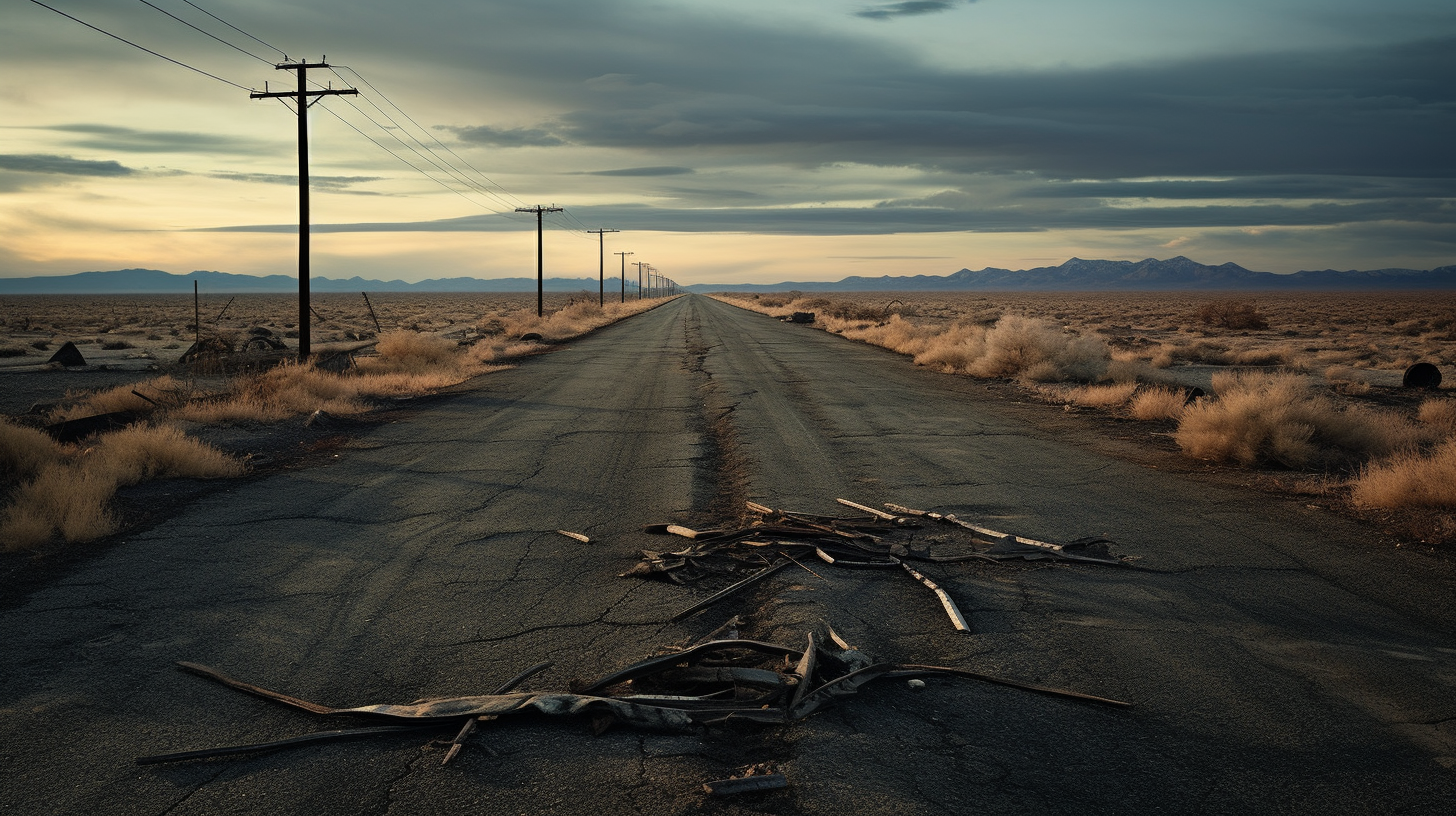The gray ribbons that once bisected landscapes, connecting humans and economies with industrial precision, now lie in desolate abandonment. Our journey down The Lonesome Road begins with a stark vista, an endless path cleared through nature’s once-imposing bastion, yet no longer thrumming with vehicular lifeblood; instead, it is the eerie stillness that greets us.
As our footsteps echo on the cracked asphalt, we become aware of our solitude among the creeping foliage and the rusting road signs, symbols of guidance for a world that has moved on. Bold graffiti tells a narrative of insurrection, the disuse sprouting art in the absence of vehicles, revealing stories stark against the decaying backdrop. The dichotomy is potent – a canvas of human expression over a tapestry of neglect.
Where once rubber kissed concrete, now sneakers shuffle through scattered debris, a surreal museum to civilization’s past ambition. Each step on this moribund span is a tribute to the age of the Anthropocene, marked by traces of our societal exhaustion. Kudzu vines entwine guardrails like arboreal pythons, an emblem of nature’s irrevocable reconquest that harks back to our previous coverage in ‘Asphalt Meadows – When Highways Revert to Nature.’
In what used to be the fast lane, poplar trees stretch skyward, a testament to years unfettered by human intervention. The end of the highway has no signpost, no mile marker; it simply disintegrates into the encroaching wild, a literal off-road for those with a quixotic longing for what was before the decline. Creatures not seen in these parts for decades now flit among former overpasses, like sprites reclaiming a forgotten realm.
Through the cracked visor of a traffic light, no longer pulsing green, yellow, red, we witness the end days of the machines. Here, a car carcass, windows smashed, has become the abode of opportunistic fauna. And in this solemn theater, one can almost hear the ghostly whir of engines, a phantasmic echo of the times when these roads were the arteries of commerce and connection.
Artifacts of humanity’s gone era litter the roadside; they whisper stories if one dares listen. Abandoned gas stations stand sentry, awaiting customers who no longer come. ‘Closed’ signs hang limply, their messages now redundant footnotes in history. There is a profound message here: human constructs are but temporary players on the geological stage.
Yet even amidst the despondency, there arises a peculiar beauty. Sunsets paint the broken edges of bridges in gold and crimson, a warm glow that once illuminated bustling journeys, now an artful accent on the crumbling canvas. Interspersed are the silvers of spider webs, stitching the ruins back into the heart of the ecosystem.
The road’s end is enigmatic; a question posed to our modernity, a challenge to our hubris. It asks us to contemplate our legacy, our impermanence, and the planet we share with forces far more enduring than concrete and steel.
In the final analysis, the lesson of The Lonesome Road is one of reflection, a dramatic soliloquy that beckons us towards introspection and perhaps, a greater respect for the natural world that remains, dominant and untamed. And as night descends, shrouding the highway relics in darkness, we leave just as we came, with the whisper of the wind as our sole companion on this journey through abandoned byways of vibrant decay.
